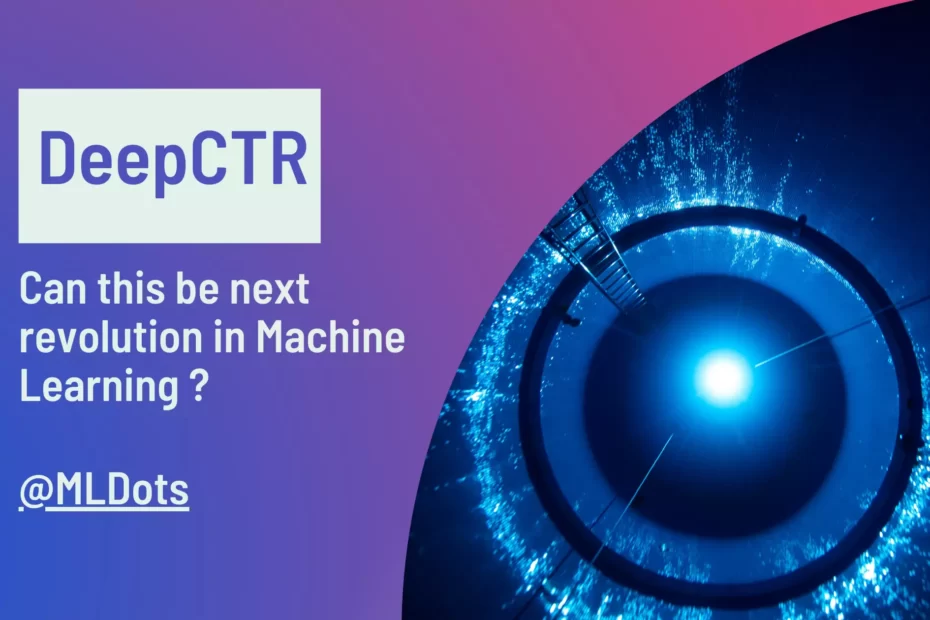DeepCTRL or Deep Control Functions or simply the Deep CTR is a new technology with multiple applications and possibilities in computer vision, deep learning, self-driving cars, robotics, drug discovery and more. In this article, we shall discuss about what is DeepCTRL how it is used and usecases. Based on Google’s research paper we will explore the algorithm along with case studies and limitations of DeepCTRL.
DeepCTRL is a revolutionary new neural network that can be trained to quickly and easily analyze images, videos, text, and sound.
DeepCTRL can recognize objects in images and videos, categorize them according to specific criteria, and even describe what it sees.
It’s like the human brain, only better.
How does DeepCTRL work?
DeepCTRL is a multi-layer neural network made up of hardware and software. The hardware components include multiple GPUs (Graphics Processing Units) to process visual information quickly, 100+ terabytes of storage for data crunching, and a proprietary algorithm that allows DeepCTRL to “learn” from its own mistakes.
The software controls the hardware and processes the data. It’s based on the same technology Google uses for its self-driving car project.
The best part? You don’t have to be a computer scientist or data scientist to use DeepCTRL®. The framework does all the hard work for you. All you need is a little bit of background knowledge about machine learning and data science, plus some creativity on how you want your model to behave!
DeepCTRL can also be added to any device that utilizes the Internet and allows users to post text or images.
DeepCTRL’s basic features include:
-Adding more comments than you think is possible
-Able to attach photos, videos, and memes
-Able to draw pictures
-Able to upload audio files
Lets see some examples of DeepCTR
Basic example: A user on a social media platform posts a photo of their lunch. They want more people to see it, so they add a DeepCTRL comment: “Hey everyone! Check out this amazing lunch I just got from [restaurant name]! It’s [type of food].
I wish you could smell it right now.” Using DeepCTRL, the user is able to link the comment directly to the image itself so viewers can see exactly what they’re smelling without ever leaving the screen they’re on
The most obvious use-case is the training of a DNN to analyze your data for specific patterns or predict outcomes.
This can be done by using a simple formula that calls the DNN as an external function, or by constructing a spreadsheet that uses multiple sheets and custom formulas to call functions in different Deep Neural Networks (DNN)s that are all linked together.
The use-case here is analyzing large amounts of data quickly, where traditional approaches are too cumbersome or time-consuming.
In addition to training and analysis, DeepCTRL can also be used for inference; that is, it can be used to predict outcomes without having trained a DNN.
This makes it possible to use your existing data to see how well your potential future data will do with certain models. You can also combine statistical analysis with DNNs in order to improve results, or you can use this approach as an alternative method if you don’t have the time or resources to train your own model.
DeepCTRL works best when used in conjunction with other Google services, such as BigQuery,etc
Does it has any Limitations?
DeepCTRL is limited by the quality of its inputs. For example, DeepCTRL cannot be used to make predictions about weather patterns because it only has access to current conditions. To predict weather patterns, it would need access to historical data, which it does not have.
The focus of DeepCTRL is to make information easily accessible, and easily shareable. It doesn’t matter whether you want to share a picture of your cat, or the latest breakthrough in cancer research—DeepCTRL wants to help you.
How does it work in Machine Learning ?
DeepCTRL takes in sequence-to-sequence models (like the one used in neural machine translation) and trains them using reinforcement learning. With prior knowledge about the tasks it needs to perform, DeepCTRL is able to achieve better performance than neural machine translation alone.
The DeepCTRL machine learning implementation allows for super-fast learning of deep neural net-based control systems. It can be integrated with the DeepCTRL machine learning system to provide real-time control or self-learning capabilities. As it is able to learn from past experience, it allows for faster reaction to changing conditions and better performance
DeepCTR setup in Python:
#Importing DeepCTR library
from deepctr.models import DeepFM
from deepctr.feature_column import SparseFeat, get_feature_names
#Defining model:
model = DeepFM(linear_feature_columns, dnn_feature_columns, task='regression')More detailed end to end examples of DeepCTR are here
DeepCTRL provides some additional features which are not present in other frameworks like TensorFlow, Caffe, Torch,etc.
These features include multiple input combinations in a single layer, support for implicit graphs, easy portability to more platforms, etc but very few details concerning these features are available at this moment.
Digital aspects of our life are becoming more part of our daily routine. From digital payments to digital interactions, we have simplified and saved a lot of time in doing such tasks. DeepCTRL aims to improve the way machine learning gets used by people in the real world.
DeepCTRL is thus trying to bridge the gap between Google’s research and the user community which will ultimately improve Google’s products
We will be closely monitoring DeepCTRL to get further updates and thus we will definitely keep you posted as soon as something interesting pops out. Hope you enjoyed this article at MLDots.
